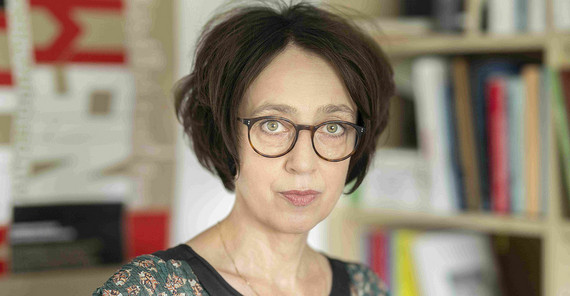How has Polish democracy developed since the beginnings of Solidarność in the 1980s?
The fundamental ideas for Poland’s future democratic order after 1989 were already taking shape within the opposition structures of the 1980s, but the process was far from easy. The massive Solidarność movement was dismantled with the imposition of martial law on December 13, 1981, and the free union was only legalized again at the 1989 round table talks. Solidarność, as a mass movement, never fully recovered from the blow of martial law, and throughout the 1980s, opposition groups operated underground. Nonetheless, after 1989, various political parties emerged from these opposition structures, continuing to shape Poland’s political landscape today.
What path did Poland take after the Wende?
I like to look back at the 2000s in Poland: a time of political optimism and economic growth, following the radical and, for many Poles, painful economic reforms of the 1990s – known as “shock therapy” for good reason. With its accession to NATO in 1999 and the European Union in 2004, Poland achieved its long-sought stability. The hard-earned democracy felt like a matter of course back then. Today, however, people in Poland and beyond recognize that democracy is an ongoing challenge and far from guaranteed.
In 2005, Poland experienced its first rightward shift with the election victory of PiS, which – apart from a break between 2007 and 2015 – maintained power until its loss in the parliamentary elections of October 2023. What characterizes PiS and its politics?
The “Law and Justice” party is a right-wing populist party – similar to many of its counterparts across Europe and elsewhere. While these parties differ in some ideological aspects, they have much in common: They reject modernity and liberalism and polarize societies with enemy constructs, propaganda, and disinformation. They are highly adaptable, using current issues to fuel their populist agendas. For example, the PiS of 2005 was not the same PiS that regained power in 2015. This increasingly radicalized party learned from its past mistakes. In 2007, PiS’s “revolutionary” ambitions were halted by Poland’s Constitutional Court, which led to one of its first actions after winning in 2015: seizing political control of the Constitutional Court and gradually transforming it into a party institution. This move shocked Polish liberals and sparked the first street protests against right-wing populist politics. Today, we know that when right-wing populists gain power – whether in Hungary, Poland, Italy, or Israel – they tend to threaten the independence of the media and judiciary. Sooner or later, such actions erode the rule of law and lead toward autocracy.
Where does PiS policy stand in comparison to other European countries?
Right-wing populists learn from each other, share knowledge, and actively support one another. Viktor Orbán’s Fidesz party in Hungary served as a model for PiS in Poland. What does this mean? It suggests that democratic politicians should also share strategies to address the threats posed by right-wing populism. In Germany, for example, there are already concrete discussions about strengthening the independence of the judiciary and the Constitutional Court in response to the rise of right-wing populism. Poland’s recent experiences are being analyzed closely in these discussions.
Is the coalition victory around Donald Tusk, an avowed European, really a step toward the (re)democratization of Poland?
On October 15, 2023, the country experienced a new turning point. For liberals, this moment is as significant as the transformations of 1989. It was far from certain that the democratic opposition would win the recent election, given its lack of access to public media, which were completely controlled by PiS. Despite the party’s takeover of the media, parts of the judiciary, and many public institutions, including cultural institutions, PiS did not succeed in dismantling Polish civil society. The remarkable mobilization of Polish society, particularly young people and women, demonstrated that it is possible to vote out authoritarian right-wing populists – as long as free elections remain. Restoring democratic institutions in Poland will be a long process. While the newly elected democratic coalition is on a promising path, it faces a challenging road ahead – especially as it must be cautious not to violate legal boundaries while attempting to restore the rule of law, which may prove difficult given the weakened state of key institutions.
What role does Poland play in and for Europe?
Support for the EU remains very high in Poland, possibly even higher than in Germany. However, current surveys show that around 20% of Poles now favor a “Polexit.” This number roughly aligns with the core supporters of right-wing populist and far-right parties. Although this percentage is significant, I’m afraid that it’s not much lower in Germany. I am confident that Poland will resume its responsibilities within the EU to the degree expected of a medium-sized member state. At the same time, Poland will likely carve its own path within the EU – especially on issues like migration policy or agriculture. Some may find this disappointing, but these policies are understandable given that PiS still holds the support of one-third of Polish voters. Moving forward, Poland must act politically in a way that minimizes the risk of a resurgence of right-wing populism.
Magdalena Marszałek has been a Professor of Slavic Literature and Cultural Studies with a focus on Polish philology at the Institute for Slavic Studies at the University of Potsdam since 2011.
“I am passionate about Europe, and I sincerely hope that the EU will not fall to right-wing populism.”
Magdalena Marszałek


